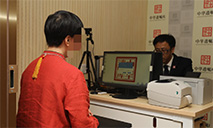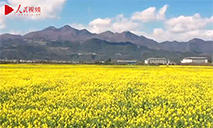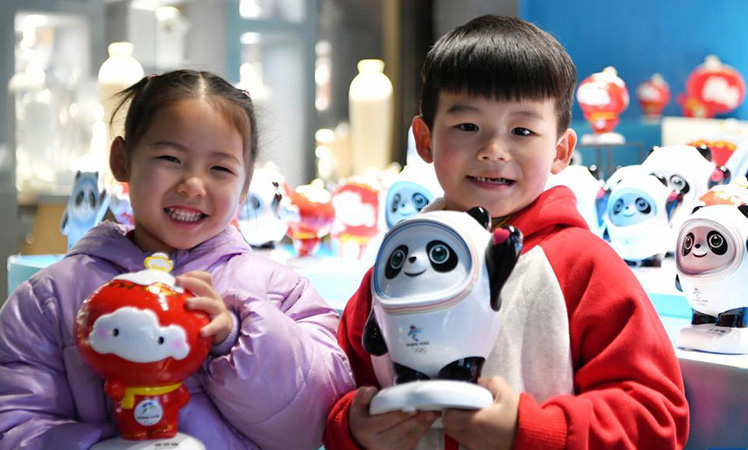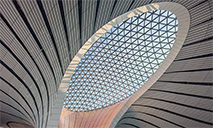Acupuncture -- a bridge of friendship between India, China
NEW DELHI, March 25 (Xinhua) -- Chinese acupuncture has become a bridge of friendship between India and China, with more and more Indians accepting the form of traditional Chinese medicine over the past few decades, experts said.
Acupuncture, a technique to cure various ailments, was first introduced to India in 1959 by Dr. B.K. Basu in the eastern city of Kolkata, capital of West Bengal state, according to Dr. Mrigendranath Gantait, president of the Acupuncture Association of India.
Over the past six decades it has spread to rural, semi-urban and urban areas in India, particularly in the states of West Bengal, Maharashtra and Punjab.
While the state governments of West Bengal and Maharashtra have officially recognized acupuncture as a way of treatment, the Indian central government recognized it in the year 2019 as a "system of healthcare."
Acupuncture is a complementary medical practice that entails stimulating certain points on the body, usually with needles penetrating the skin, to alleviate pain or help treat various health conditions.
Efforts are also on to popularize it even more in the South Asian nation, experts said.
Dr. Gantait told Xinhua that acupuncture has been a "strong bridge" of friendship between the two populous countries.
Acupuncture therapy in India is related to the story of the Indian Medical Mission (IMM) that was dispatched to China to provide medical assistance during the Chinese People's War of Resistance Against Japanese Aggression.
Dr. Basu, as a colleague of Dr. Dwarkanath Kotnis (widely known as Dr. Ke Dihua in China) and a torchbearer of the IMM, stayed in China for nearly five years during 1938-1943 as an IMM member, and later had worked for another 43 years for the IMM in India until his death in 1986.
In 1958-1959, Dr. Basu stayed in China for six months to learn acupuncture before introducing the needle techniques to India.
In 1973, Dr. Basu was invited to China to learn newly-developed acupuncture anesthesia.
From the very beginning Dr. Basu tried to spread acupuncture to doctors by free teaching and disseminate science for broad masses of people.
Dr. Basu, who established Dr. Kotnis Memorial Committee (DKMC) and the Acupuncture Association of India to preach the ideals of the medical mission, even donated his house and savings to the government of West Bengal state for the purpose of development of acupuncture.
Under the leadership of the DKMC, free health service clinics have been set up where acupuncture is taken as the main treatment modality, because the cost of acupuncture treatment is very much low, and acupuncture is effective in many ailments.
The DKMC has also produced many barefoot acupuncturists who run these clinics without taking any remuneration, according to Dr. Gantait.
"Acupuncture has played a unique role to promote people's friendship between India and China," he said.
"When Dr. Basu returned to India after learning acupuncture anesthesia, the Indian media described it as acupuncture diplomacy, and it was highly praised in the country.
Dr. Inderjeet Singh Dhingra, who is an ace acupuncture practitioner in India's northern state of Punjab, runs a small acupuncture hospital in the industrial town of Ludhiana curing people with tiny needles.
He said acupuncture can cure as many as 338 diseases, including body pains, gynecological problems, paralytic dysfunctions and arthritis pains. Each day, there are 60 to 70 patients coming to see the doctor in his hospital.
Photos
 Increasingly more young adults in China register wills that include virtual assets
Increasingly more young adults in China register wills that include virtual assets Rapeseed flowers turn NW China's Luoping into picturesque spring wonderland
Rapeseed flowers turn NW China's Luoping into picturesque spring wonderland Why do people in China fall for animated characters like LinaBell and Bing Dwen Dwen?
Why do people in China fall for animated characters like LinaBell and Bing Dwen Dwen? Photo Album: architecture in Beijing merging history and modernity
Photo Album: architecture in Beijing merging history and modernity
Related Stories
- India's new envoy to China assumes office amid welcoming voices, expectations to improve ties
- China seriously concerned over India's crackdowns on Chinese companies, apps
- China's Commerce Ministry urges India to treat all investors fairly
- China-India corps commander level meeting constructive: defense spokesperson
- Chinese consulate general, Bengal chamber of commerce hold webinar to promote China-India economic cooperation
Copyright © 2022 People's Daily Online. All Rights Reserved.






